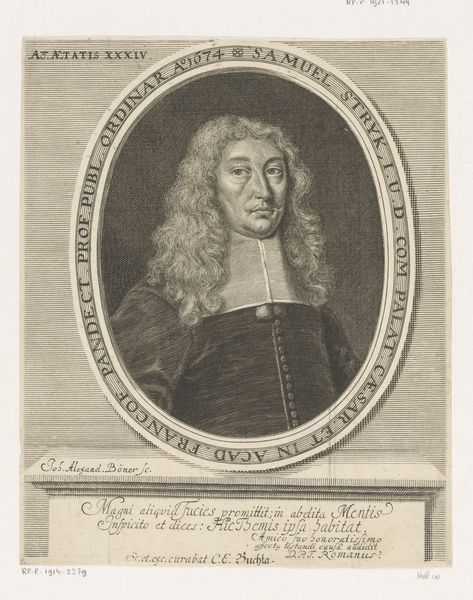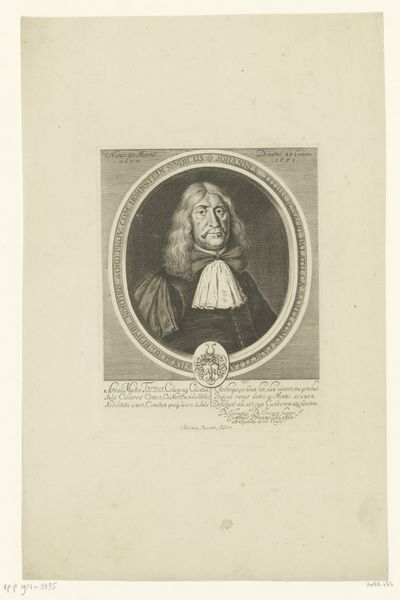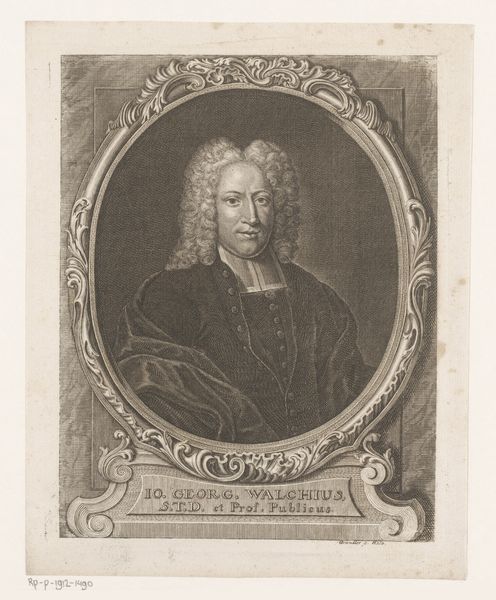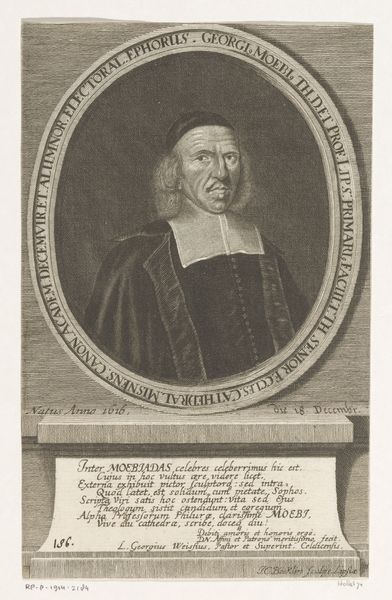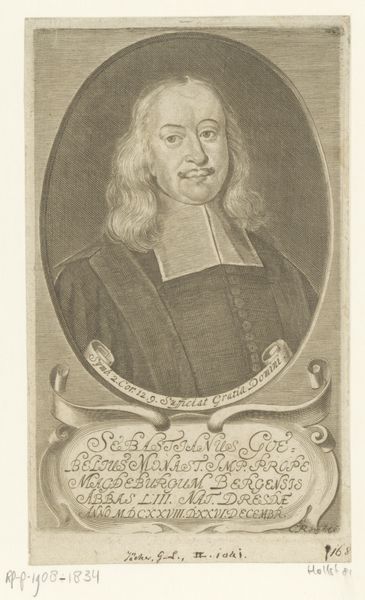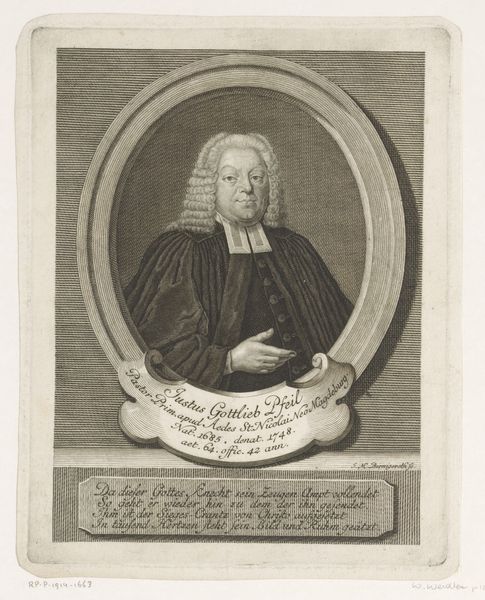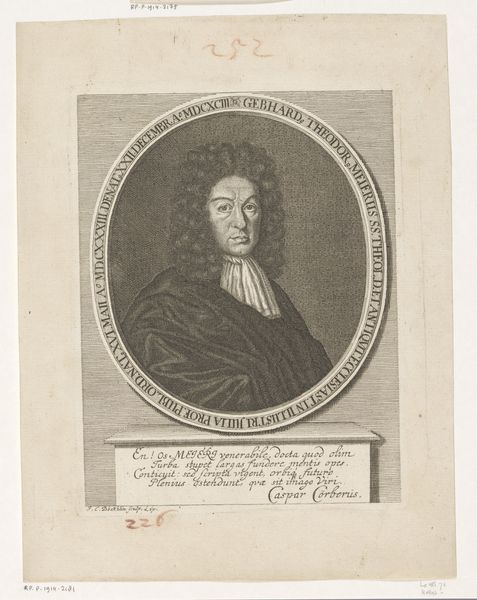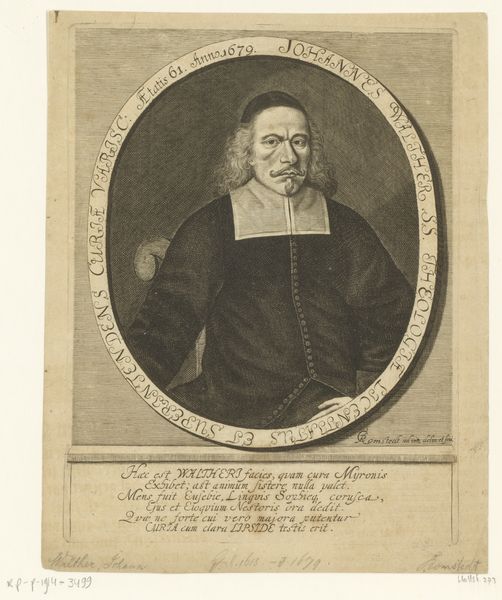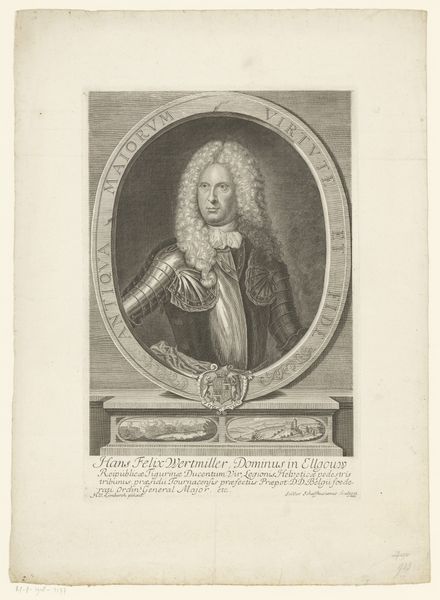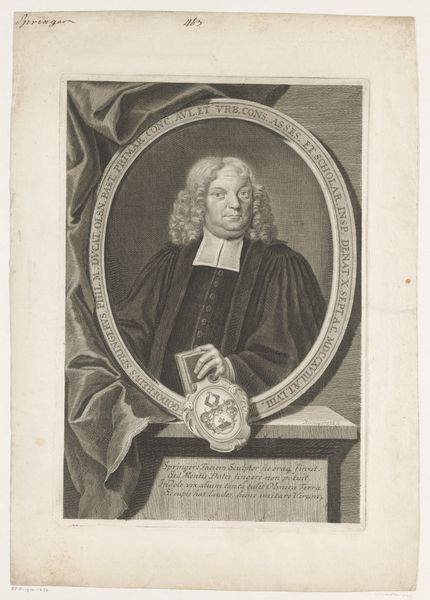
print, engraving
#
portrait
#
baroque
# print
#
old engraving style
#
history-painting
#
engraving
Dimensions: height 183 mm, width 145 mm
Copyright: Rijks Museum: Open Domain
Curator: This print, entitled "Portret van Friedrich Rappolt," comes to us from somewhere between 1665 and 1721 and is most likely an engraving. It offers a stark and compelling look at its subject, wouldn't you agree? Editor: Absolutely, there's a severity in the subject's expression that the engraving deftly captures, largely through the density of the lines and the limited tonal range, contributing to a sense of restrained power, almost academic rigor. It draws you in—despite the rigid composition! Curator: Yes, the sitter appears in a formal presentation—the academic or theological dress—combined with that slightly world-weary gaze that adds depth, hinting at perhaps a figure deeply engaged in the social and political struggles of his time. I see echoes of the religious and intellectual debates that gripped Europe. Editor: Notice how the engraver's technical skill builds a subtle balance in the portrait’s symmetry, drawing particular attention to the play of light across his face, especially the contrast between the lit forehead and the shadowed cheeks—the composition leads the eye straight to the psychological space, as if daring the viewer to meet the gaze directly. Curator: The historical context informs this directness. Rappolt, presumably a theologian as noted in the inscription, existed in an era where religious identity was intensely scrutinized, made very public—and therefore this portrait performs ideological work by constructing an image of steadfastness. It's also important to consider that, as a print, its reach could be extensive, shaping public perception of the man. Editor: Precisely. Further, the texture achieved is very much worth mentioning. This print exemplifies a skilled hand that fully explores line thickness and depth to imply dimensionality in what would otherwise be a very two-dimensional format. It breathes a subdued liveliness into the subject matter, making it stand out in a rather plain setting. Curator: Examining such works bridges us to pivotal historical moments, asking us to reflect on representation, identity, and how societal values materialize visually. These aren't just images—they're dense intersections of meaning. Editor: A meticulous, visually arresting exercise in conveying presence and conveying thought. This is certainly not merely an informative visual document but a successful transmutation of observed form into affective visual experience.
Comments
No comments
Be the first to comment and join the conversation on the ultimate creative platform.

